
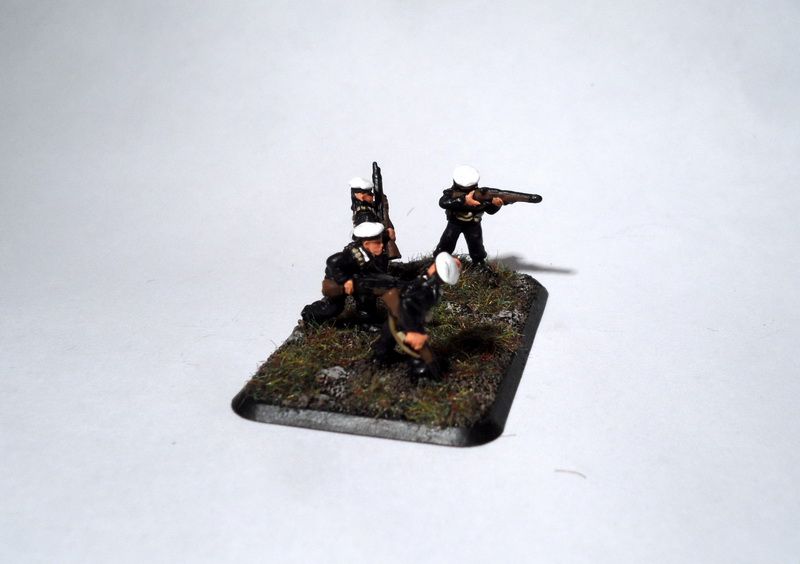
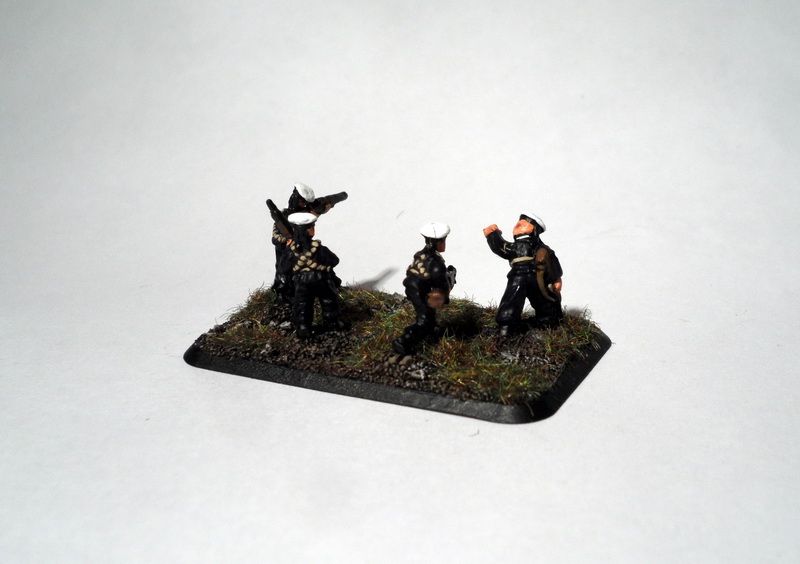
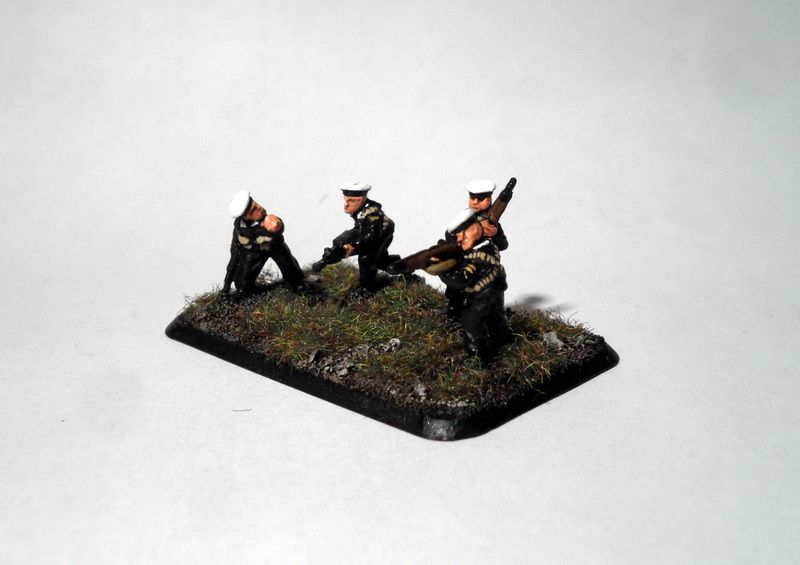 This information honestly slipped by when I was writing my September Campaign Orders of Battle book. It slipped by because it wasn't mentioned in any of the regular OoB which I was consulting when writing all the formations on company/battalion level. It was only when I was reading up on individual battles that the role of the Polish navy personnel and specific navy regiments fighting during the invasion got clearer.
This information honestly slipped by when I was writing my September Campaign Orders of Battle book. It slipped by because it wasn't mentioned in any of the regular OoB which I was consulting when writing all the formations on company/battalion level. It was only when I was reading up on individual battles that the role of the Polish navy personnel and specific navy regiments fighting during the invasion got clearer.Poland only had a tiny stretch of land, the "Polish corridor" with the city Gdynia, in the way of having contact with the sea. The navy was fairly small, but did include an assortment of ships - most of which were ordered to head for Britain once the invasion began.
However, on the fortified Hel peninsula 3000 Polish troops were stationed on the day the invasion broke out. Hel was a very slim but long stretch of land housing bunker with guns facing the sea and it also had at the time a bunch of ships anchored nearby - ships that were stripped of their guns and personnel and used on land to boost the defenders artillery and infantry numbers.
At the same time Colonel Stanisław Dąbek who was in charge of the northernmost defense of the Polish corridor, including the protection of Gdynia realized the importance of Polands only port and made preparations for the defense of the city. The defense was organized in such a fashion as to spare the port from combat damage, and Dąbek took the decision to abandon Gdynia completely to spare the civilian population and moved his troops to the Oksywie heights overlooking the city on September 12th.
During defensive preparations the Polish commander had at his disposal 2 regiments of "Navy rifles", attached to the defense of the Gdynia area - both had been deployed on the flanks to delay the German advance towards the city. These regiments were the 1st and 2nd Regiment of Navy rifles.
Their organization was as follows:
1st Regiment of Navy rifles (1. Morski Pułk Strzelców)
Commander Kazimierz Pruszkowski
1st Battalion: 3 companies of infantry and 1 company of HMG's
2nd Battalion: 3 companies of infantry and 1 company of HMG's
The 1st regiment had around 1800 men.
2nd Regiment of Navy rifles (2. Morski Pułk Strzelców)
Commadner lieutenant-colonel Ignacy Szpunar
1st Battalion: 3 companies of infantry and 1 company of HMG's
2nd Battalion: 3 companies of infantry and 1 company of HMG's
3rd Battalion (organized as a reserve unit) : 3 companies of infantry and 1 company of HMG's
Together with sapper units, artillery and reconnaissance the 2nd regiment was around 3000 men strong.
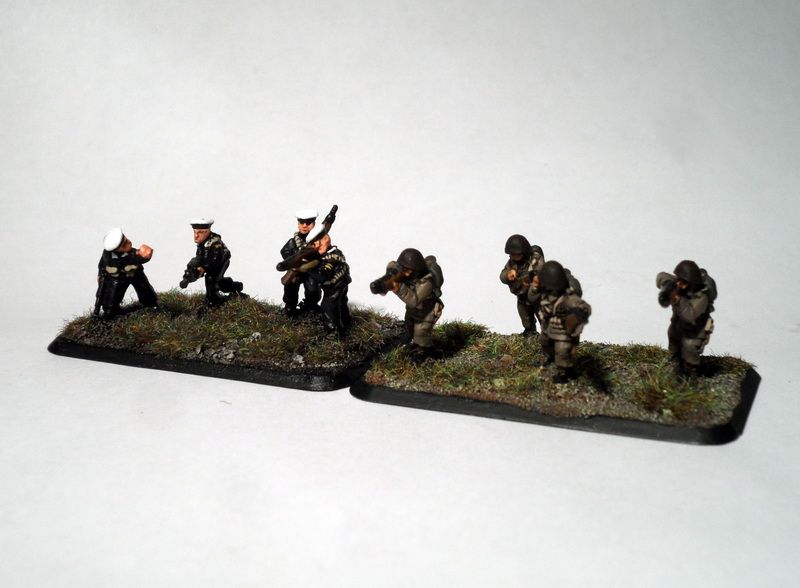
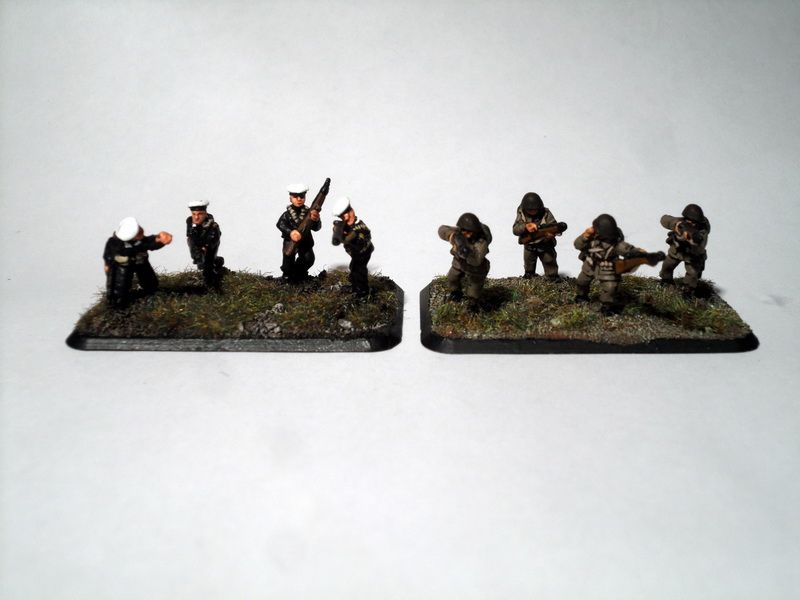 These regiments appeared dressed like any other Polish infantry and fought alongside the rest of the defenders in the Gdynia and Oksywie region.
These regiments appeared dressed like any other Polish infantry and fought alongside the rest of the defenders in the Gdynia and Oksywie region. The 2nd Regiment took a beating as it was positioned in a place which was stormed by the German attackers multiple times during the battle - and also because the 2nd regiment performed counterattacks throughout the fighting. The losses among the Polish defenders were staggering, as can be seen among the losses of the 1st Regiment which had 900 men killed and lost 61% of its officers and 48% of its soldiers. The whole Polish force suffered 2.000 killed and 7.000 wounded. Among the dead was Colonel Stanisław Dąbek.
Interestingly enough, the Polish navy had a substantial reserve of sailors stationed in Gdynia prior to the outbreak of the war, and while drafting everyone who could fight Dąbek asked the navy commander if he would be willing to organize these sailors into a battalion which would boost the land forces. And so it happened, no exact information about this unit is available but the sailors fought and died like everyone else on the Oksywie heights - fighting in their sailor uniforms. Some of the officers and soldiers received Polish standard issue helmets as their only additional equipment.
This makes for a great modeling opportunity and a way of boosting your Polish Early War collection with another distinct unit to spice things up. Now sources tell that sailors fought near Gdynia and in some capacity at the Hel Peninsula - but you could also field them in small numbers as part of the "River Flotilla" stationed near Pinsk and the Pripyat marshes as those units fought alongside the Polish independent operational group "Polesie". Even though this last option would be a bit "forced" since those sailors swapped their navy uniform for regular Polish infantry uniforms (some junior officers retained their sailor caps, the rest of the personnel just swapped the Army eagle on the field caps for the Navy eagle.
To field Polish sailors in your Early War army the best option is to go for the Soviet Navy infantry from Battlefront. First of all, this manufacturer has the most amount of rifles per SMG ratio in the blister - and you are only interested in Pistols, Rifles and LMG gunners, so this will be the least wasteful purchase. Second of all the models on this scale look fairly close. The main uniform difference is the "tail" on the sailor hats - the Polish sailor hat does not have them. And also the Soviet navy infantry minis lack the "flap" or whatever it is called behind the neck. Neither error is something that you'll see from tabletop distance anyway. You can convert the LMG into a BAR by chopping the round magazine from the sides and trim the top, and add a clip underneath the gun to make it look more like BAR.
No comments:
Post a Comment